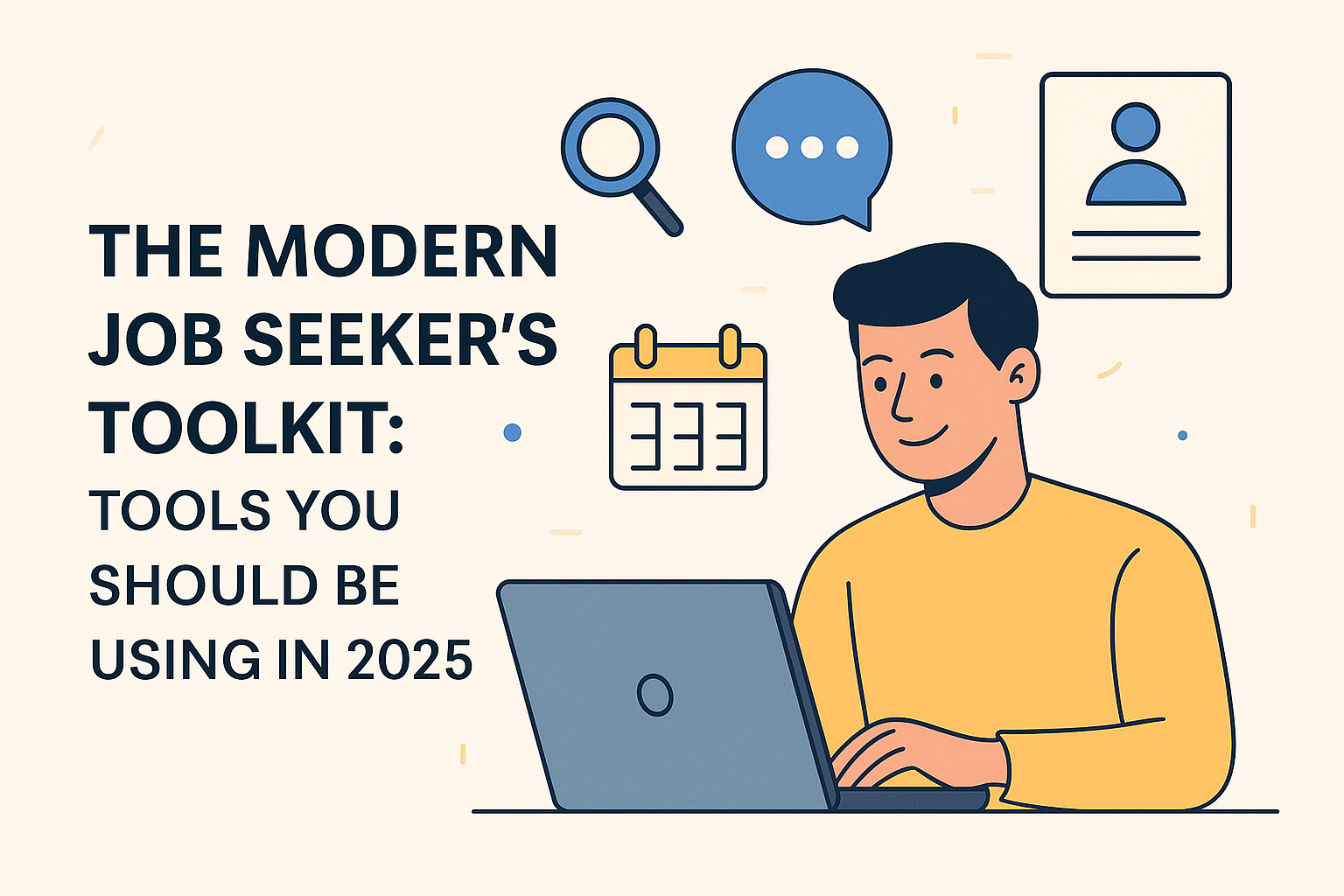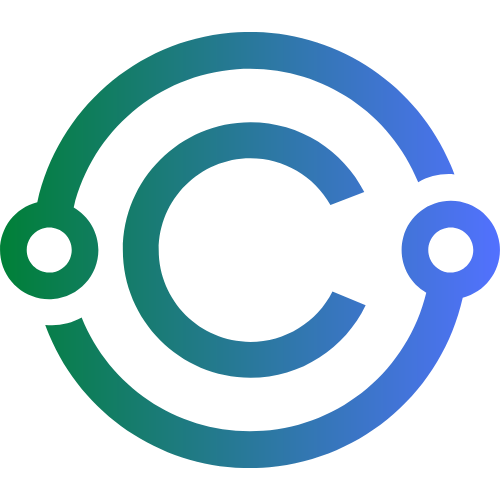The Modern Job Seeker’s Toolkit: Tools You Should Be Using in 2025

The job search landscape in 2023 is more digital, competitive, and fast-paced than ever before. Applying through job boards alone is no longer enough. Today’s successful job seekers use a mix of technology, strategy, and personal branding to stand out.
If you're still relying on outdated methods or ignoring the tools that can streamline your search, you’re working harder—not smarter.
In this guide, we’ll break down the most effective tools modern job seekers are using in 2023 to:
- Find better opportunities
- Craft better applications
- Track job search progress
- Ace interviews
- Build powerful personal brands
Plus, we’ll include a case study and link you to platforms where you can get started right away.
Let’s upgrade your job search.
1. Resume Builders That Beat the Bots
Problem: 90% of companies now use Applicant Tracking Systems (ATS). Your resume must be keyword-optimized and easy to parse.
Best Tools:
- Teal Resume Builder: ATS-friendly, tailored keyword matching, customizable templates.
- Zety: Design-forward with resume guides for different roles.
- Jobscan: Upload your resume and the job description, then see how well it matches.
Pro Tip: Tailor every resume. One-size-fits-all resumes get ignored.
2. LinkedIn Optimization Tools
Problem: Your LinkedIn profile is often your first impression—and many job seekers don’t know how to optimize it for visibility.
Best Tools:
- Resume Worded LinkedIn Review: Grades your profile and suggests improvements.
- Crystal: Helps you understand communication styles before connecting.
- Shield: Tracks analytics for your LinkedIn content and personal brand.
Bonus: Learn how to use LinkedIn to uncover hidden job opportunities with our guide: How to Use LinkedIn to Find Hidden Job Opportunities
3. Job Search Trackers and Dashboards
Problem: Applying to multiple roles without organization = missed follow-ups and forgotten contacts.
Best Tools:
- Teal Job Tracker: Manage every job you’ve applied for, customize follow-ups, track networking.
- Notion Job Dashboard: Build a personalized tracker with stages like “applied,” “interviewed,” etc.
- Huntr: Chrome extension that lets you save jobs and track application status.
Pro Tip: Track dates, status, contacts, and notes for each job.
4. Job Boards That Go Beyond Indeed
Problem: Traditional job boards are oversaturated and lack transparency.
Best Alternatives:
- Otta: Curated startup roles with salary info and growth insights.
- Wellfound (formerly AngelList): Startup jobs with great UX and culture info.
- Hired.com: Companies reach out to you directly.
- Built In: Tech roles filtered by perks, culture, and more.
Niche Boards:
- FlexJobs: For remote and flexible roles.
- Dynamite Jobs: Remote-first companies only.
5. Networking & Outreach Tools
Problem: The best roles are filled through connections—not cold applications.
Best Tools:
- Hunter.io: Find professional email addresses for outreach.
- Mailtrack: Know when your emails are opened.
- Calendly: Make it easy for people to book a call with you.
Scripts + Strategy: Read: Smart Ways to Network (Even If You're Introverted)
6. Interview Preparation Tools
Problem: Practicing out loud is awkward, but essential.
Best Tools:
- Interview Warmup by Google: Practice real questions and get AI feedback.
- Pramp: Mock interviews with peers, especially for tech.
- Big Interview: Video coaching and answer templates.
Pro Tip: Record yourself and review body language. Want help? Read: Interview Body Language – What You Say Without Speaking
7. Side Portfolio and Personal Brand Builders
Problem: Hiring managers want to see your work—especially in tech, marketing, writing, and design.
Best Tools:
- Carrd: Build a personal portfolio site in under an hour.
- Notion: Create a one-page portfolio with projects, writing, and testimonials.
- Behance: Great for designers, illustrators, and creatives.
Bonus: Post your career journey or side projects on LinkedIn once a week for visibility.
8. Online Learning & Certification Platforms
Problem: Missing a key skill? Learn it fast—then add it to your resume.
Top Platforms:
- Coursera: University-backed courses and certificates.
- LinkedIn Learning: Quick, industry-specific upskilling.
- Google Career Certificates: Job-ready programs in data, UX, IT, and more.
- edX: MicroMasters and short courses from top universities.
Pro Tip: Always add completed certifications to your LinkedIn and resume.
9. Time Management Tools for Job Seekers
Problem: Job hunting while working or studying? You need time blocks.
Top Tools:
- Clockify: Track how much time you spend applying, prepping, networking.
- Todoist: Plan your week with job search goals.
- Sunsama: Daily planner for intentional progress.
Routine Strategy: Use our 30-Day Job Search Plan to structure your week.
10. AI-Powered Career Coaching Tools
Problem: You can’t always afford a human career coach.
Top Tools:
- Teal AI Coach: AI-powered resume and cover letter help
- Yoodli: AI speech coach for interviews
- ResumAI by Wonsulting: AI resume bullet writer
Warning: Use AI tools to assist—not replace—your story or authenticity.
Case Study: How Neha Used This Toolkit to Land a Role in 40 Days
Background: Neha, a mid-level UX designer from Toronto, had been unemployed for 3 months.
What she did differently:
- Used Jobscan to tailor every resume
- Created a Carrd portfolio + updated LinkedIn with Resume Worded
- Tracked every opportunity with Teal
- Practiced interviews daily using Interview Warmup
- Posted weekly design insights on LinkedIn
Result: She landed 4 interviews in 3 weeks and accepted a remote role at a fintech company within 40 days.
Takeaway: The right tools help you stand out—even in a crowded market.
Final Thoughts: Use Tools as Leverage, Not Shortcuts
Technology doesn’t get you hired—your clarity, consistency, and creativity do. But these modern job search tools can:
- Save you hours
- Prevent burnout
- Help you compete with the best
You don’t have to use all of them. Start with 3–5 that solve your current bottleneck, and build from there.
Because in 2023, your job search deserves modern tools—and a modern mindset.

